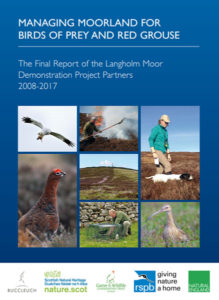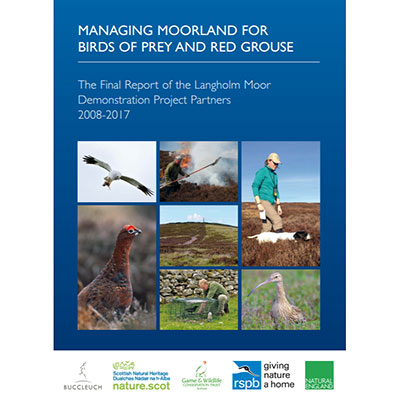 The British Association for Shooting and Conservation (BASC) has today welcomed the publication of the final report from the Langholm Moor Demonstration Project (LMDP), which aimed to re-establish Langholm Moor as a driven grouse moor while simultaneously meeting raptor conservation objectives.
The British Association for Shooting and Conservation (BASC) has today welcomed the publication of the final report from the Langholm Moor Demonstration Project (LMDP), which aimed to re-establish Langholm Moor as a driven grouse moor while simultaneously meeting raptor conservation objectives.
The report comes as the Scottish Government’s review of driven grouse shooting in Scotland – known as the Werritty Review – is due to be published in the next few weeks.
The project has produced some rigorous science which has strongly highlighted the benefits of management practices associated with grouse shooting. Unfortunately, grouse numbers were unable to recover to harvestable levels due to being held at low density by sustained predation (the predator-prey trap) and the fact that Langholm is an isolated area of heather moorland (unlike most grouse moors in Scotland).
BASC Scotland Director, Dr Colin Shedden, said: “The final Langholm report clearly highlights some of the outstanding benefits associated with grouse management for raptors and upland waders. It has also highlighted the exceptional work undertaken by grouse managers to preserve heather moorland which is an internationally rare habitat. Pressures from predation on grouse were one of the main contributors to failing to reconvene driven shooting at Langholm. The report has usefully highlighted causation factors and potential strategies for reducing the burden of raptor predation.”
“The economic credentials highlighted in this report are most impressive and echo the findings of a Scottish Government report published in 2018, which suggested that the grouse shooting sector contributes £14.5 million in wages and £23.3 million to the Scottish economy. The annual contribution of more than £244,000 over the course of this project is outstanding, and is representative of the level of investment on other, similar-sized grouse moors in Scotland. This substantial investment by grouse moor owners has profound benefits for biodiversity, jobs and fragile rural economies at no expense to the tax payer.”
